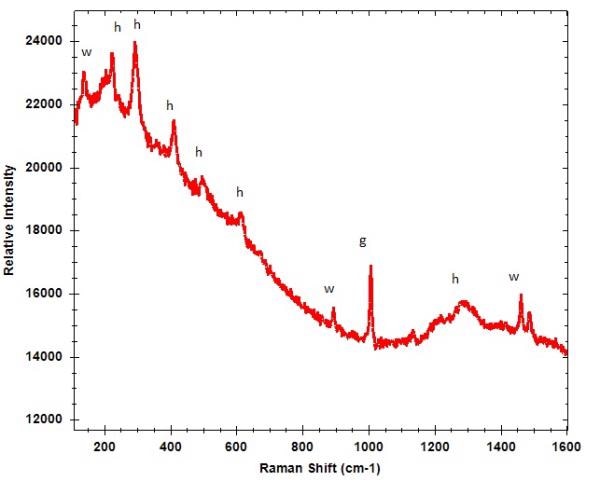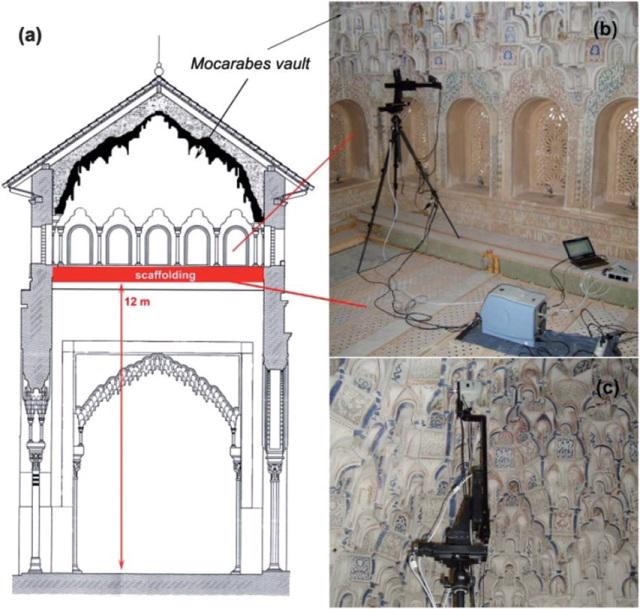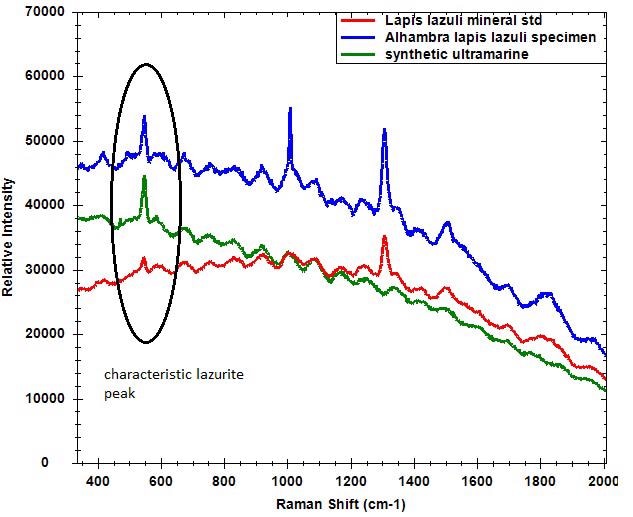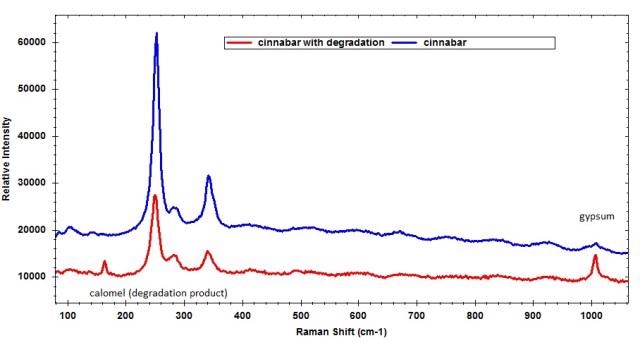An essential part of analyzing archaeological artifacts and artworks is chemical identification. It is possible to obtain this data through non-destructive Raman analysis directly in the environment in which artifacts have been discovered. This data forms the basis for the identification of dyes, paints and pigments, indicating when and how a piece was made, offering insight into the creation time, and signifying the object’s authenticity.
Raman spectroscopy can be used for the measurement of lower frequency vibrations (below 500cm-1). This region offers considerable information to characterize minerals and inorganic materials like pigments. By studying the Raman spectrum, it is also possible to identify differences in polymorphic forms of pigments.
With reduction in the size of the Raman spectrometer, there has been an increase in the usage of Raman spectroscopy for archaeological investigations. The portability of the instrument enables on-site analysis without the need to remove the samples or disrupt important archaeological sites.
Portable Raman instruments like the i-Raman® series include a fiber optic probe, which helps reach samples easily in varying conditions. Samples beyond reach can also be studied using the probe. There is no need for sample preparation. The portability of the instrument and the fiber optic probe is used for measuring samples of different shapes and sizes. It is possible to adjust the system’s laser power at 1% increments, which allows for low laser power (3mW). This kind of versatility makes this system ideal while working with challenging samples like dark pigments.
Examples of Studying Archaeological Sites with Raman Spectroscopy
Paintings in Abrigo de los Chaparros (Albalate del Arzobispo, Teruel) on the Iberian Peninsula
In a recent study, portable Raman spectroscopy was used for characterizing prehistoric paintings on the Abrigo de los Chaparros (Albalate del Arzobispo, Teruel) on the Iberian Peninsula. These rock paintings were identified in open-air shelters. This made Raman measurements challenging because of wind, sunlight, and crusts and dust that may have formed on the surface. These could obstruct the Raman signal of the pigments. For this study, a flexible foam rubber cap also known as Carol's cap was designed and used for reducing environmental interferences on the Raman spectra.
A spectrum of finger dots in the cave was acquired in daylight (Figure 1), wherein haematite (h) peaks as well as those attributed to crusts consisting of whewellite (w) and gypsum (g) can be seen.

Figure 1. Raman spectrum of cave rock art measured in situ in daylight with peaks of the pigment haematite (h) and accretions of gypsum (g) and whewellite (w).
Plasterwork in Vaults of Alhambra Hall of Kings
B&W Tek's portable Raman spectrometers are also being utilized in a detailed study of materials used in the plasterwork in vaults of the Alhambra Hall of Kings. It is one of the most significant cultural sites in Spain.
This is an ongoing work and had been conducted for several years now. It involves analyzing the plasterwork material and understanding the technologies involved in the application of the plasterworks and the decay they have been subjected to. A schematic view of the Hall of Kings showing the Raman instrument location combined with a microscope head on the scaffolding 12m above the ground, and pictures of the instrumentation and the video microscope with a motorized stage on a tripod mounting are shown in Figure 2.

Figure 2. a. Schematic of a vertical section of one vault in the Hall of the Kings with height of the scaffold holding instrumentation marked. b. Complete Raman instrument on top of the scaffolding and c. Details of the microscope probe on tripod. (Reproduced with permission of The Royal Society of Chemistry)
Raman spectra were measured on the stalactite vault decorations of the Alhambra without the removal of samples, thus maintaining the integrity of this important cultural heritage site while being able to study a larger area of the site. The multi-color gypsum decorations reflect an Islamic style. Several classic antiquity pigments were identified and from the lapis lazuli spectra, it is also possible to identify the geographic origin. Blue is a significant color in Islamic art and traces its origins from the mineral lazurite to form the lapis lazuli pigment.
The spectra of the vault’ s blue decorations and the synthetic and natural blue pigments, all of which have the characteristic lazurite mineral peak at 548cm-1, are shown in Figure 3.

Figure 3. Raman spectra of blue pigments, all exhibiting characteristic lazurite peak at 548 cm-1.
The minium and cinnabar pigments offer red color in the decoration of the vaults. In different regions of the vaults, these were found and in certain decorative motifs, they appear to have been used collectively. Cinnabar spectra were obtained over the gypsum substrates.
From the data collected, not just the pigments can be identified but also the degradation they are subject to. White coloring is present and can be detected in the cinnabar Raman spectra as seen in Figure 4. This occurs due to the degradation product calomel, which also includes signal at 1009cm- 1 from the gypsum over which the pigments are applied.

Figure 4. Raman spectra of cinnabar pigment in good condition, and showing signs of degradation.
Most of the decorations’ gilded parts have suffered from decay and are not as widely present. Therefore, in situ analysis is the only way to characterize these limited and difficult to access sample regions. The black area in the vaults close to the gilding probably indicates tin oxide, suggesting that instead of gold, tin foil was used in the gilding, probably during later restorations.
Conclusions
Portable Raman spectroscopy is a very useful tool for studying archaeological sites, enabling in situ analysis and thus reducing the impact of these kinds of studies on key cultural sites. The flexibility of using a fiber optic probe and tripod-mounted video microscope with a lightweight instrument reduces sampling requirement and improves the ability to make representative measurements over what can be very large sample areas.
The instrument also enables flexibility and control in the analysis of difficult dark pigment samples, thanks to the ability to adjust the laser power to low levels. Raman spectroscopy helps gain insights into the materials used in constructing and restoring important archaeological sites, and understanding the degradation taking place to help the restoration and preservation work.

This information has been sourced, reviewed and adapted from materials provided by B&W Tek.
For more information on this source, please visit B&W Tek.